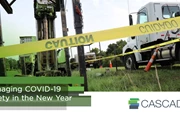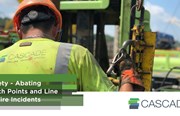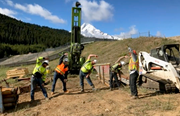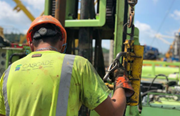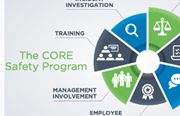Safety - Abating Pinch Points and Line of Fire Incidents
By: Ken PostThe hand is the second most common body part involved in workplace injuries. Hand injuries made up nearly 14% of all injury cases in 2018 as reported by the Bureau of Labor Statistics. That’s second only to back injuries. Pinch point injuries, line of fire incidents, and crush points are serious safety issues that environmental services professionals face every day whether it’s on a rig, logging samples, or injecting amendments. These injuries cost companies millions of dollars in insurance claims, potentially lead to regulatory fines, and impact the ability to win future work. Worse, the employees who sustain these injuries may have long-lasting or even permanent physical impacts. In today’s blog post, I’ll cover steps to reduce these types of injuries.
EDUCATE EMPLOYEES ON HAZARD IDENTIFICATION
Training employees how to identify potential hazards and mitigate risk in the field is a proven defense. Exposure to the line of fire, pinch points, or caught-between hazards is simply unavoidable in many field service projects. So the ability to correctly identify a hazard and immediately take proper action to correct it is a critical safety skill.
Successful training goes beyond the classroom and includes a hands-on approach (pun intended). We have found more success when an experienced crew member guides new employees around a job site taking time to point out potential line of fire hazards, crush points, and caught-between dangers, that are present during operations. This allows employees to see how loose-fitting clothes can get caught in equipment or learn how to properly secure a pipe so it doesn’t roll away and hurt someone. Employees are shown where to stand and how to clear the area when moving casing into place to avoid the line of fire and caught-between positions. Starting day one, you can help field crews make a habit of identifying risk and addressing hazards to ensure they are properly mitigated prior to the task.
DEVELOP MENTORSHIP PROGRAM
A mentorship program encourages seasoned professionals to teach newer field services workers about safe practices on the job site. It also builds a sense of comradery in the field. Once that bond is established, the benefits expand both ways. Sometimes fresh eyes see things a veteran might miss.
The benefits of mentoring extend beyond the reduced injury rate. A piece in the Huffington Post cites increases in employee education and learning, reduced turnover costs, and development of leadership and management skills among the benefits of a workplace mentoring program. In other words, all this leads to a stronger bottom line, higher production rate, and increased employee morale.
RECOGNIZE IMPROVEMENT
Safety campaigns are often designed to educate employees on a specific hazard then drive behavior change to reduce injuries related to the hazard. In this case, statistics tell the story. Determine the appropriate safety data for your campaign, calculate the benchmark numbers and set a goal. Then, report progress on a regular, frequent basis. Recognizing improvement by way of reduced number of near misses, injuries, and severity of injuries is an effective approach to continued awareness and employee engagement. Recognizing individual efforts and the achievements of small groups is often another successful means of engagement.
Training, mentorship, and recognition are key components of a world-class Health & Safety program. Learn more about Cascade’s CORE™ Safety program at www.cascade-env.com/about-us/safety-program/. You can read more tips on promoting hand safety in our previous blog Job Site Safety is in Your Hands.

